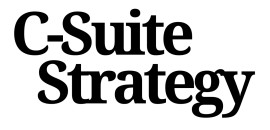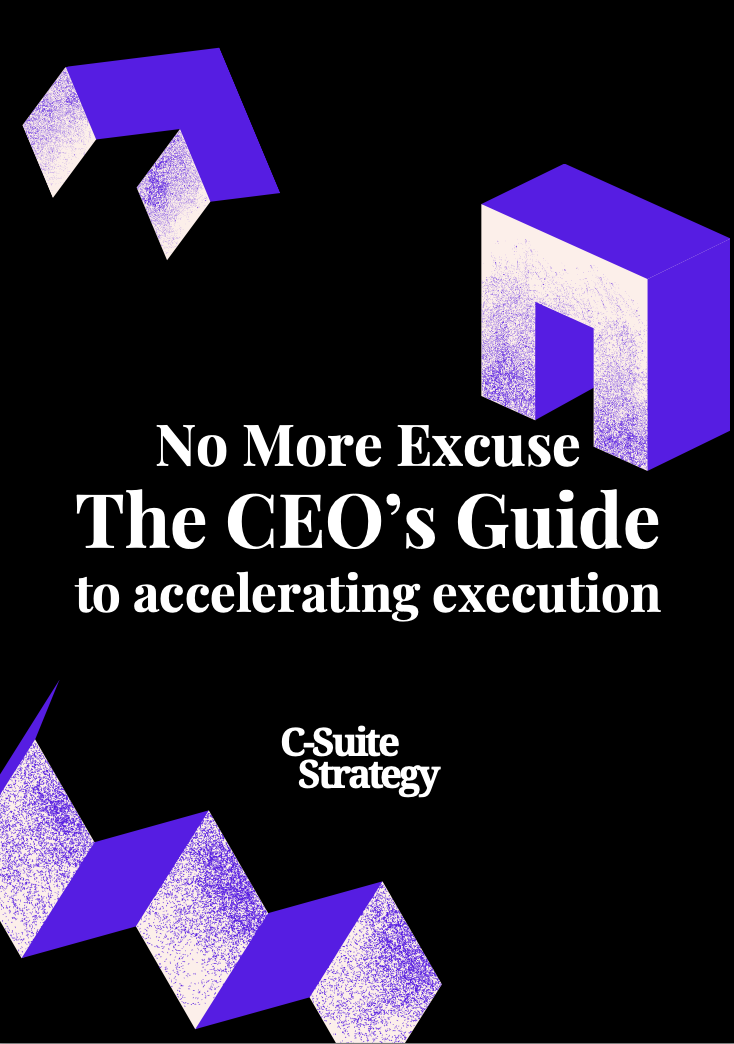
Understanding the Strategic Landscape
Understanding the ever-evolving strategic landscape is crucial for CEOs who aim to lead their businesses to success. As global markets continue to change at a rapid pace, senior leaders must adapt and make informed decisions to stay ahead. Participating in workshops designed specifically for executives provides the opportunity to explore new perspectives and refresh their strategic vision.Illuminating the Path Forward
In today's corporate world, clarity, confidence, and agility are paramount for effective leadership. Senior executives must continuously refine their skills and knowledge through executive education. Programs like these offer practical tools needed for advanced decision making, ultimately bolstering an organization's strategic edge. By engaging in such initiatives, leaders can better align their vision with the realities of their business, fostering a culture of innovation and resilience.Unlocking Key Resources
A comprehensive understanding of the strategic landscape requires access to cutting-edge resources and insights. For instance, executive coaching and education courses are invaluable in equipping leaders with the necessary skills to tackle challenges and seize opportunities. Essential Inquiries for Leadership to Drive Strategic Success highlight the importance of continual learning in navigating complex environments.Harnessing Collective Knowledge
Facilitated by experienced faculty, these programs enable senior leadership to engage with a community of like-minded peers, promoting the exchange of ideas and shared learning. The collaboration within such workshops enriches the learning experience and empowers executives to drive impactful changes within their organizations. As alumni cultivate relationships, they gain a broader perspective and the confidence to lead transformative initiatives. Investing time in understanding and adapting to the strategic landscape can significantly enhance a CEO’s ability to lead effectively within a dynamic business environment. By prioritizing leadership development and embracing innovative strategies, senior executives are better positioned to guide their organizations toward enduring success.Aligning Vision with Execution
Bridging Vision and Execution
In the realm of strategic leadership, aligning vision with execution is paramount. This alignment ensures that the strategic vision is not just a distant dream but a practical reality. Senior executives must develop the leadership skills necessary to translate high-level strategies into actionable plans. This involves a deep understanding of the organization’s capabilities and the external business environment.
To achieve this, leaders must engage in executive education programs that offer cutting-edge insights and practical tools. These programs, often led by experienced faculty, provide senior leaders with the clarity and confidence needed to make informed decisions. By participating in these workshops, executives can explore new strategies and learn from global business leaders.
Practical Tools for Strategic Alignment
Executive coaching and advanced certificate courses are instrumental in honing decision-making skills. These education courses help leaders learn how to effectively manage resources and align them with the strategic goals of the organization. By fostering a culture of continuous learning, organizations can ensure that their leadership is equipped to navigate complex challenges.
Moreover, the integration of digital tools in strategic management can enhance the execution of business strategies. Live online sessions and alumni status opportunities offer executives the chance to engage with peers and share insights on best practices. This collaborative approach not only strengthens leadership communication but also fosters a sense of community among senior executives.
For more insights on aligning vision with execution, consider exploring essential inquiries for leadership to drive strategic success. This resource provides valuable perspectives on how leaders can effectively bridge the gap between strategic vision and operational execution.
Fostering Innovation and Agility
Cultivating a Culture of Innovation and Adaptability
In today's rapidly evolving business landscape, fostering innovation and agility is crucial for sustaining a competitive edge. As leaders, understanding and adapting to these dynamics can mean the difference between thriving or stumbling in uncertain times. Executives should prioritize creating an environment where team members feel empowered to explore new ideas and approaches. Encouraging a culture that embraces change means promoting open communication, valuing diverse perspectives, and enabling your organization to pivot swiftly in response to shifts in the market or emerging technologies. To achieve this, a comprehensive approach that incorporates leadership skills is essential. Integrating practical tools from executive education programs, such as advanced certificates or executive coaching, can provide your organization with the cutting-edge strategies needed for success.- Promote a Safe Space for Innovation: Establishing platforms where people feel free to present ideas without fear of reproach encourages a steady stream of creativity.
- Frequent Feedback Loops: Repeatedly analyzing outcomes and receiving feedback ensures you’re making data-driven decisions that enhance your organization's adaptability.
- Leverage Executive Education: Participating in executive courses, perhaps even incorporating elements of general management programs, can equip senior executives with the knowledge and leadership skills necessary to lead their teams towards innovation confidently.
Enhancing Leadership Communication
Improving Communication Across Tiers
In today’s rapidly evolving global business landscape, senior leaders understand that effective communication is not a mere accessory, but a fundamental leadership skill that can enhance decision making and drive success. This requires a blend of clarity and confidence to navigate the intricate dynamics of people management. Senior executives often grapple with the challenge of conveying strategic visions down the hierarchical layers, which can often be a make-or-break factor for an organization’s success or failure. To bridge the communication gap, participating in executive education programs offers practical tools aimed at improving leadership communication. These programs provide executive coaching and live online education courses tailored to impart clarity in conveying organizational objectives. By enrolling in a workshop dedicated to this aspect, leaders learn from global faculty renowned for their expertise in leadership skills and strategic communication. Moreover, fostering an inclusive environment where feedback is actively encouraged can radically impact the organization’s advancement. Executives benefit from these educational initiatives by exploring advanced certificate programs that are designed to enhance their interpersonal and communication abilities, empowering them to articulate their strategic vision effectively. These workshops enable CEOs to refine their understanding of both verbal and non-verbal cues, an integral part of communication, which can significantly impact team morale and productivity. With the added benefit of obtaining an executive certificate or advanced certificate, senior leaders cultivate an environment that promotes transparency and constructive dialogue. In summary, for senior executives who aspire to lead with authority and inspire trust, enhancing communication across all tiers of the organization is paramount. Leveraging faculties specializing in executive coaching ensures that leaders are equipped with cutting edge strategies and skills needed to thrive in today’s digital age. By committing to these executive-level programs, senior leadership is well-positioned to drive their organization towards unprecedented success.Building Resilient Organizations
Strengthening Organizational Resilience
In today's rapidly evolving business environment, building resilient organizations is not just a strategic advantage—it's a necessity. Senior leaders must focus on creating a robust framework that can withstand disruptions while maintaining operational continuity. This involves a comprehensive approach to leadership, where executives are equipped with the skills to navigate complexities and uncertainties.
One of the key aspects of fostering resilience is through leadership development programs. These programs will help senior executives enhance their decision-making capabilities and leadership skills. By participating in executive education courses, leaders learn practical tools that are essential for managing change effectively. Such programs often offer cutting-edge insights into global business trends, enabling leaders to anticipate and adapt to shifts in the market.
Empowering People and Processes
Resilient organizations are built on the foundation of empowered people and streamlined processes. Leaders must focus on nurturing a culture that encourages innovation and agility, as discussed in previous sections. This involves creating an environment where employees feel valued and motivated to contribute to the organization's success. By fostering a sense of ownership and accountability, leaders can drive engagement and productivity across all levels of the organization.
Moreover, leveraging digital tools and technologies can significantly enhance organizational resilience. By integrating digital solutions into business processes, companies can improve efficiency and responsiveness. This digital transformation is crucial for maintaining a competitive edge in the global market.
Leadership Communication and Clarity
Effective communication is at the heart of building resilient organizations. Senior leadership must ensure that there is clarity and confidence in the messaging conveyed across the organization. This involves not only communicating strategic goals but also listening to feedback and fostering open dialogue. By doing so, leaders can align vision with execution, ensuring that everyone is working towards common objectives.
Executive coaching can play a pivotal role in enhancing leadership communication skills. Through personalized coaching sessions, leaders can refine their communication strategies, ensuring that they are both impactful and authentic. This, in turn, strengthens the organization's ability to adapt and thrive in the face of challenges.
Measuring Success and Adjusting Strategies
Evaluating Progress and Refining Approaches
In the dynamic world of business, measuring success is not just about numbers; it’s about understanding the impact of your strategies and making informed decisions. Senior executives must leverage their leadership skills to assess whether their strategic vision is translating into tangible outcomes. This involves a deep dive into both quantitative and qualitative metrics, ensuring that the organization remains on the right track.
To achieve this, leaders must explore various tools and methodologies that provide clarity and confidence in decision making. Executive education programs offer cutting-edge insights and practical tools that help leaders learn how to effectively measure success. These programs, often available as live online courses, equip executives with the skills needed to adapt strategies in real-time.
Adapting Strategies for Continued Success
Once the current strategy has been evaluated, it’s crucial to adjust it to align with the ever-changing business landscape. This is where fostering innovation and agility becomes essential. By integrating feedback and insights from the strategic landscape, senior leaders can refine their approaches, ensuring that their organization remains resilient and competitive.
Executive coaching and advanced certificate programs can be invaluable in this process, offering senior leadership the opportunity to gain new perspectives and enhance their management skills. Alumni status from such programs often provides access to a global network of leaders, facilitating the exchange of ideas and best practices.
Continuous Learning and Improvement
Finally, the journey of strategic leadership is one of continuous learning. By engaging in executive education and leadership programs, executives can stay ahead of industry trends and develop the skills necessary for long-term success. These programs will help senior executives not only measure success but also adapt their strategies to meet future challenges.
In conclusion, measuring success and adjusting strategies is a critical component of effective leadership. By leveraging education courses and executive coaching, leaders can ensure their organization’s continued growth and success.














